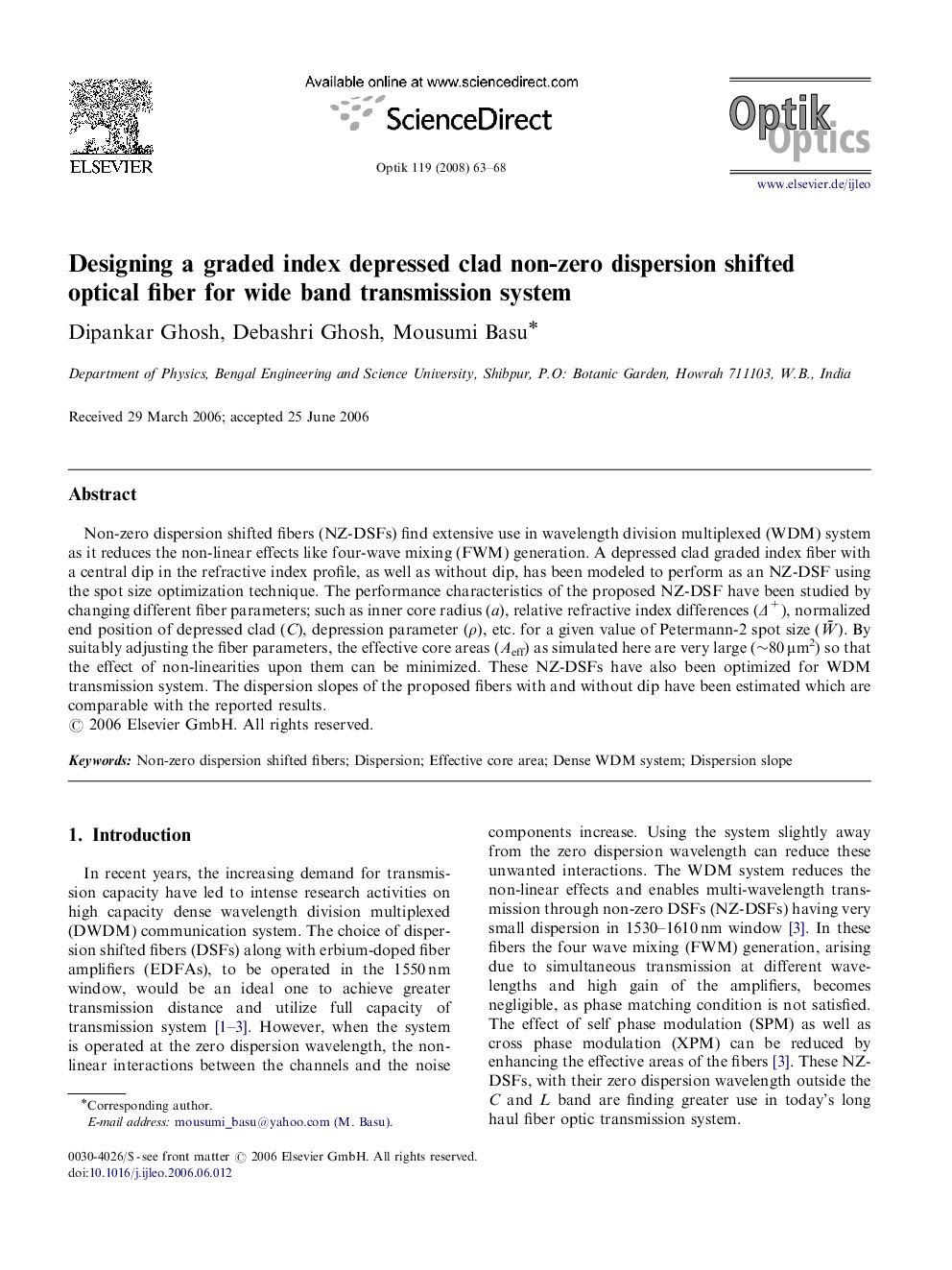| Article ID | Journal | Published Year | Pages | File Type |
|---|---|---|---|---|
| 851183 | Optik - International Journal for Light and Electron Optics | 2008 | 6 Pages |
Non-zero dispersion shifted fibers (NZ-DSFs) find extensive use in wavelength division multiplexed (WDM) system as it reduces the non-linear effects like four-wave mixing (FWM) generation. A depressed clad graded index fiber with a central dip in the refractive index profile, as well as without dip, has been modeled to perform as an NZ-DSF using the spot size optimization technique. The performance characteristics of the proposed NZ-DSF have been studied by changing different fiber parameters; such as inner core radius (a), relative refractive index differences (Δ+), normalized end position of depressed clad (C), depression parameter (ρ ), etc. for a given value of Petermann-2 spot size (W¯). By suitably adjusting the fiber parameters, the effective core areas (Aeff) as simulated here are very large (∼80 μm2) so that the effect of non-linearities upon them can be minimized. These NZ-DSFs have also been optimized for WDM transmission system. The dispersion slopes of the proposed fibers with and without dip have been estimated which are comparable with the reported results.
